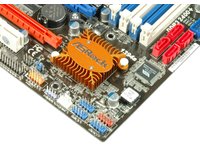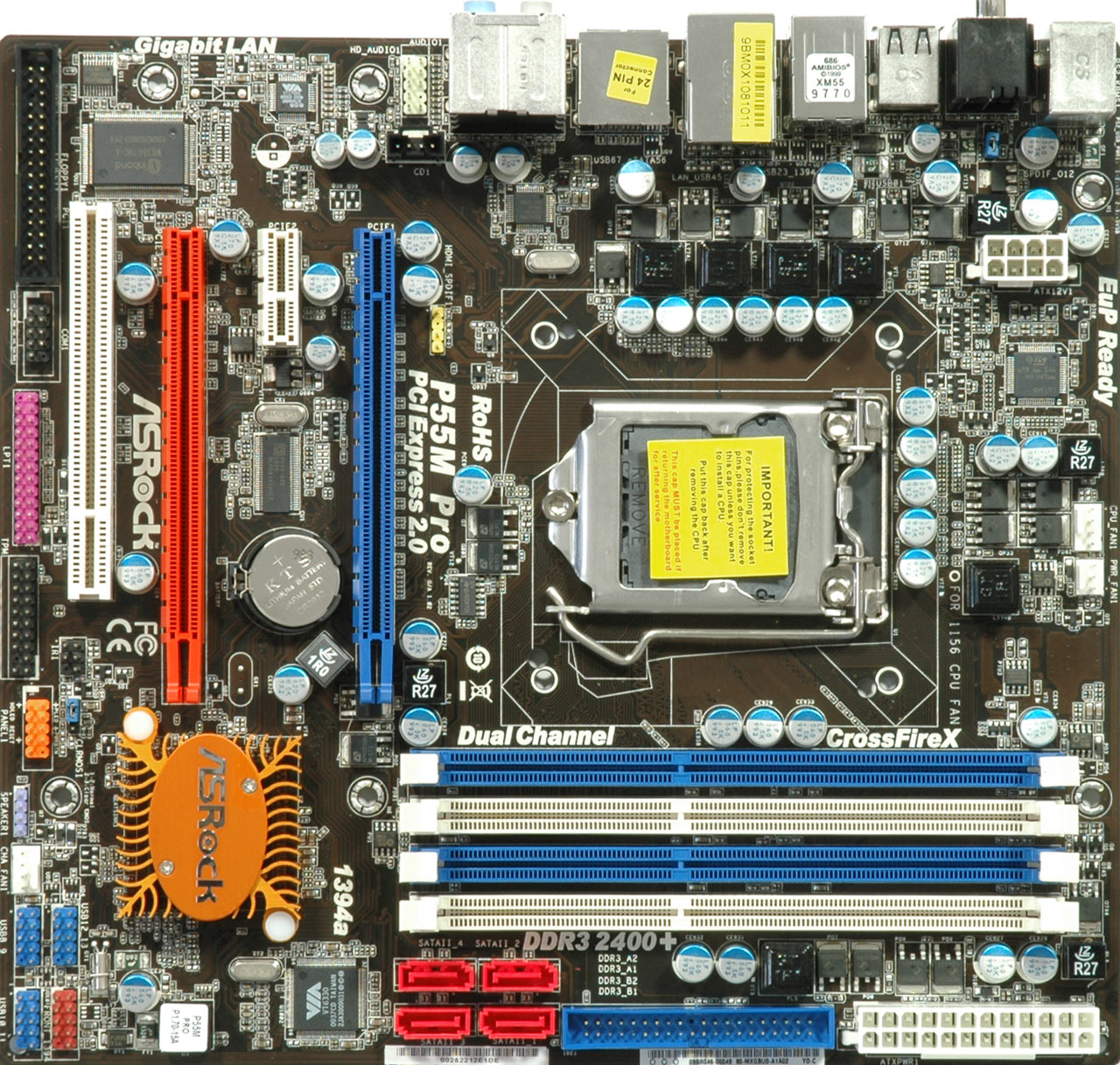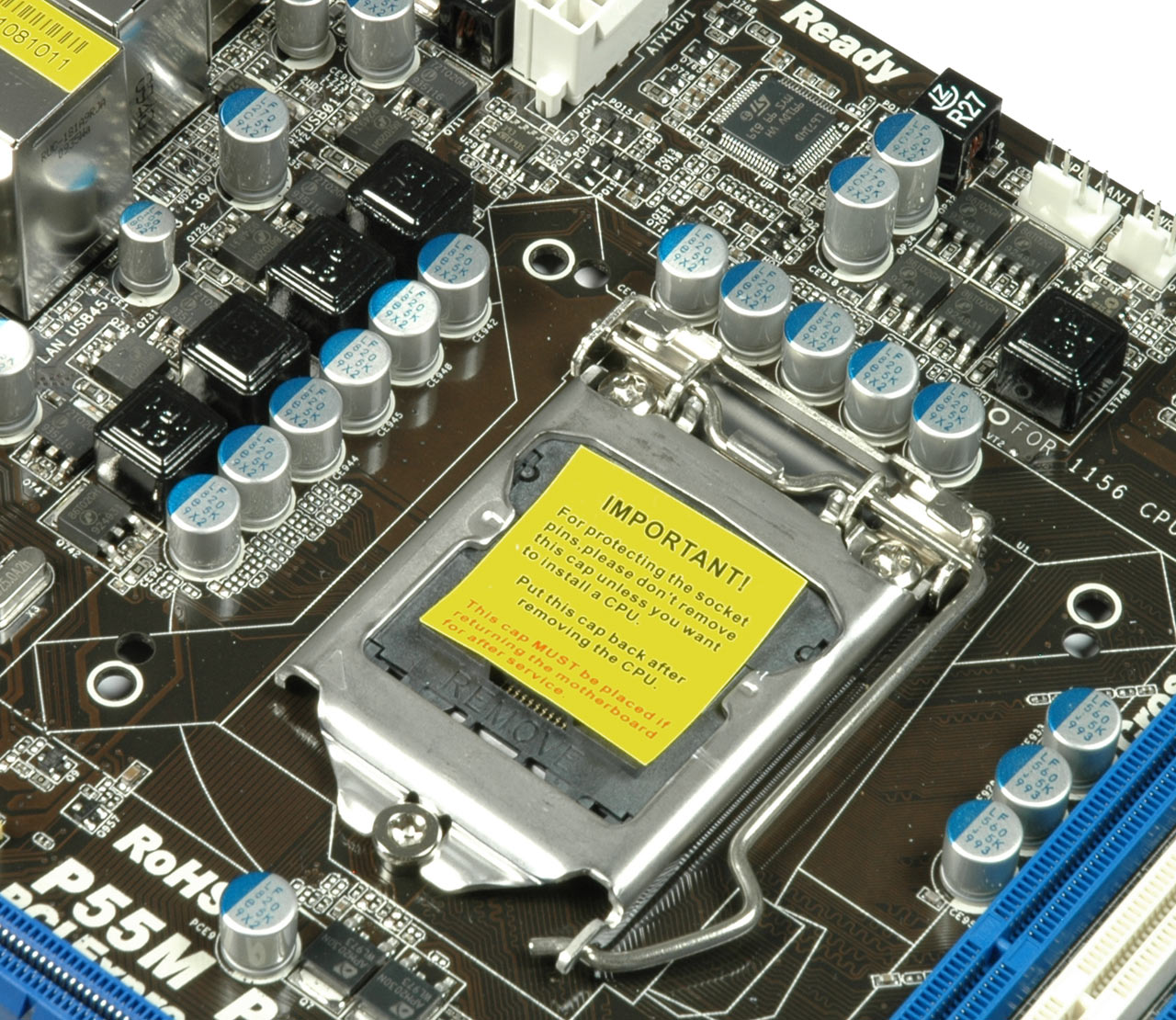Compact P55: Four MicroATX Motherboards Tried And Tested
ASRock P55M Pro
Board revision 1.02; BIOS 1.9
ASRock’s P55M Pro targets the upper-mainstream, including a few items and features that the P55 chipset native lacks. This is the only microATX board in ASRock’s P55 portfolio. The board comes with a FireWire 1394a controller with one port, and ASRock implements two of the P55’s six SATA 3 Gb/s ports as eSATA ports. Interestingly, they come as shared USB 2.0 ports—you can use either one or the other. However, there are some eSATA storage devices available, such as eSATA thumb drives, that require this type of port. eSATA alone is not capable of supplying power to the storage device.
The board has five-phase voltage regulators (4+1 design), which should really be sufficient for most processor overclocking scenarios. For some reason, this board showed the highest system idle power—not just a little, but as much as 15W. At the same time, it showed the lowest system peak power consumption when using a Core i5-750 processor overclocked to 4.0 GHz. ASRock’s BIOS option to enable power savings (Intelligent Energy Saver) was switched on during the testing.
The board comes with legacy interfaces, including parallel and serial ports and an IR header. It even offers PS/2 mouse and keyboard connectors, a feature only MSI matches. There is a floppy controller, as well, which still might come handy if you want to install anything but the latest Windows version and need storage drivers in the process. Four out of the six SATA 3 Gb/s ports are available for internal devices—plenty for an average desktop PC.
The additional expansion slots leave plenty of room for expansion, as there is one x1 PCIe slot and a conventional 32-bit PCI 2.3 slot. ASRock wins a few of the benchmarks, but basically delivers performance within the expected range. Sometimes it’s in front (DivX) and sometimes behind (MainConcept). Ultimately, performance shouldn’t be the key factor in your purchase decision.


Get Tom's Hardware's best news and in-depth reviews, straight to your inbox.
Current page: ASRock P55M Pro
Prev Page Compact MicroATX Platforms For Core i5 And Core i3 Next Page Foxconn P55MX


